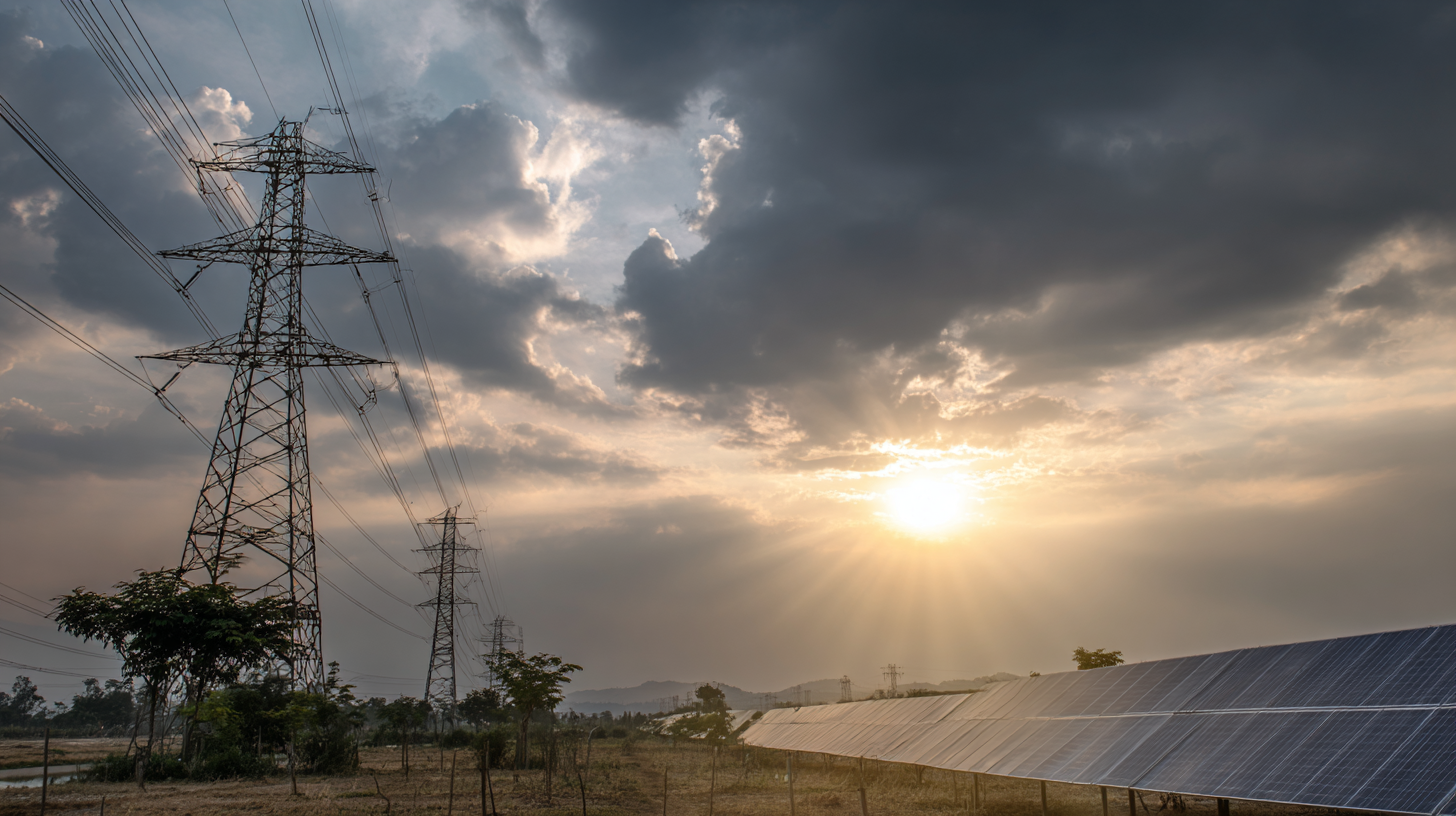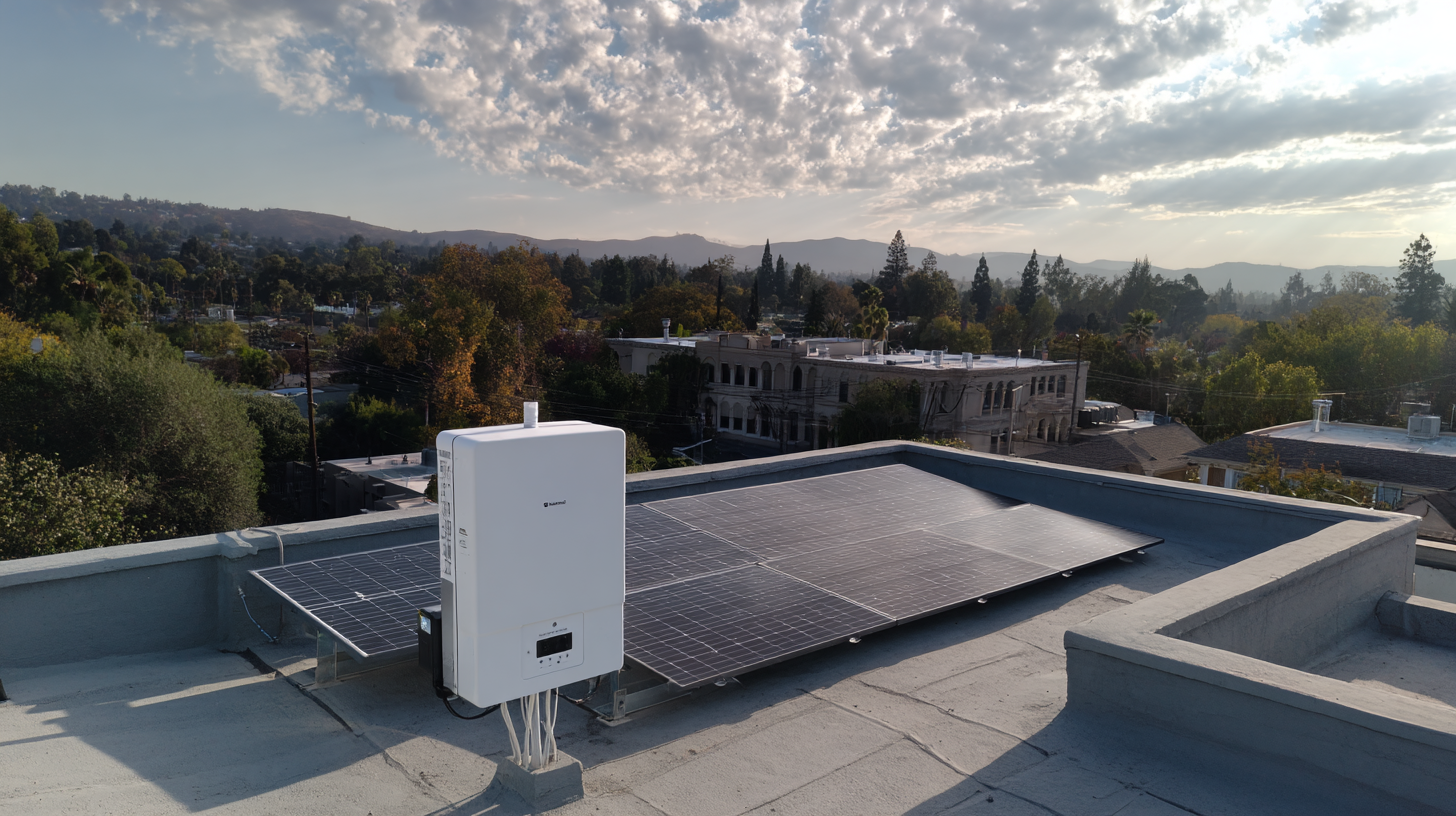SunVena Solar Blog
Residential Solar News, Insights & Resources
Mastering Your Solar System with the Best Must Solar Inverter Selection Guide
In the rapidly evolving renewable energy landscape, the importance of selecting the right components for your solar system cannot be overstated. According to the International Energy Agency, global solar PV capacity reached over 760 GW in 2020 and is projected to continue its robust growth, emphasizing the need for efficient and reliable technology. A crucial player in this equation is the must solar inverter, which converts the direct current generated by solar panels into alternating current for household use.

With the increasing demand for high-quality, efficient solar inverters, particularly those manufactured in China that promise global accessibility and trusted quality, homeowners are presented with a myriad of choices. This selection guide aims to demystify the process of choosing the best must solar inverter, ensuring your solar investment not only meets energy needs but also maximizes system performance and longevity.
Understanding Solar Inverters: The Heart of Your Solar System
Solar inverters are often referred to as the "heart" of a solar power system, playing a crucial role in converting the direct current (DC) electricity generated by solar panels into alternating current (AC) electricity, which is used by most household appliances. According to a report by Wood Mackenzie, the global inverter market is expected to reach $10 billion by 2025, reflecting the increasing importance of these devices in renewable energy systems.
The efficiency of a solar inverter can significantly impact the overall performance of a solar power system. Studies indicate that selecting inverters with efficiencies above 95% can enhance energy yield, making a notable difference over the lifespan of a solar installation. Furthermore, advancements in inverter technology, such as the introduction of microinverters and power optimizers, allow for improved energy harvesting, reducing the impact of shading and module mismatches. The International Renewable Energy Agency (IRENA) highlights that optimizing inverter choice is critical not only for maximizing energy production but also for ensuring system reliability and longevity.
As you consider your solar inverter options, it’s essential to evaluate specifications like efficiency ratings, warranty periods, and compatibility with your existing solar array. This level of scrutiny will empower you to make informed decisions that will ultimately lead to a more efficient and sustainable solar energy system.
Mastering Your Solar System with the Best Must Solar Inverter Selection Guide
| Inverter Type | Power Output (kW) | Efficiency (%) | Warranty (Years) | Cost Range (USD) |
|---|---|---|---|---|
| String Inverter | 3 - 10 | 95 - 98 | 5 - 10 | 800 - 3,000 |
| Micro Inverter | 0.25 - 1.5 | 95 - 97 | 10 - 25 | 150 - 500 |
| Power Optimizer | 3 - 10 | 96 - 98 | 10 - 25 | 600 - 1,500 |
| Hybrid Inverter | 3 - 15 | 93 - 96 | 5 - 12 | 1,500 - 4,000 |
Key Factors to Consider When Choosing a Solar Inverter
 When selecting a solar inverter, several key factors come into play to ensure optimal performance and reliability of your solar system.
First and foremost, the inverter's efficiency rating is crucial; a higher efficiency translates to better energy conversion and increased electricity production.
Additionally, considering the inverter's power rating is fundamental, as it must be compatible with your solar panel system's capacity to prevent potential overload or underperformance.
When selecting a solar inverter, several key factors come into play to ensure optimal performance and reliability of your solar system.
First and foremost, the inverter's efficiency rating is crucial; a higher efficiency translates to better energy conversion and increased electricity production.
Additionally, considering the inverter's power rating is fundamental, as it must be compatible with your solar panel system's capacity to prevent potential overload or underperformance.
Another important aspect to evaluate is the inverter's durability and warranty coverage. Solar inverters are generally exposed to harsh environmental conditions and thus need robust construction to withstand factors like temperature fluctuations and humidity. A comprehensive warranty demonstrates the manufacturer's confidence in their product's longevity, providing peace of mind for the user.
Furthermore, take note of the features such as monitoring capabilities and grid compatibility, which can enhance the management of your solar energy production and ensure future scalability as the market evolves.
Exploring the Top Brands in Solar Inverter Manufacturing
 In the rapidly evolving solar industry, selecting the right inverter is crucial for optimizing your solar system's performance. According to the Solar Energy Industries Association (SEIA), in 2022, the U.S. solar market saw a remarkable 25% growth in installations compared to the previous year, showcasing the increasing reliance on quality solar products. Among these, inverters play a pivotal role, converting DC electricity generated by solar panels into usable AC electricity for homes and businesses.
In the rapidly evolving solar industry, selecting the right inverter is crucial for optimizing your solar system's performance. According to the Solar Energy Industries Association (SEIA), in 2022, the U.S. solar market saw a remarkable 25% growth in installations compared to the previous year, showcasing the increasing reliance on quality solar products. Among these, inverters play a pivotal role, converting DC electricity generated by solar panels into usable AC electricity for homes and businesses.
When exploring top brands in solar inverter manufacturing, several names stand out for their reputation and reliability. Brands like SMA, SolarEdge, and Fronius have become household names due to their innovative technologies and strong performance metrics. For instance, SolarEdge boasts an impressive 99% efficiency rate, significantly increasing energy yield, which is vital for maximizing returns on investment in solar systems.
Tip: Always consider the warranty and customer support offered by inverter manufacturers. A robust warranty (typically ranging from 5 to 12 years) can provide peace of mind and ensure longevity of your solar system. Furthermore, opting for brands with strong customer service can ease the installation process and provide assistance whenever issues arise. Remember, the inverter is the heart of your solar setup, so investing in a trusted brand can pay dividends in the long run.
How to Optimize the Performance of Your Solar Inverter
In optimizing the performance of your solar inverter, understanding the evolving landscape of the solar energy market is essential. With the global solar market projected to grow from $25.69 billion in 2023 to $436.36 billion by 2032, at a compound annual growth rate (CAGR) of 6%, the demand for efficient solar inverters is on the rise. This growth is further underscored by the increasing deployment of advanced technologies, such as module-level power electronics (MLPE), that enhance the efficiency of solar installations.
Recent innovations in solar inverter technology, particularly in the residential sector, indicate a significant trend towards higher performance and reliability. The residential solar photovoltaic inverter market is expected to reach $34.5 billion by 2032, with a remarkable CAGR of 12.81% from 2024 to 2032. This surge reflects not only the increasing adoption of solar energy systems but also the critical role of inverters in optimizing energy output. By employing advanced features like module-level monitoring and safety management, consumers can ensure optimal performance of their solar systems, maximizing energy efficiency and contributing to a sustainable future.
The Future of Solar Technology: Innovations in Inverter Design
As the solar industry continues to evolve, innovations in inverter design are at the forefront of enhancing overall energy efficiency and system performance. According to the International Energy Agency (IEA), inverter technology is critical since it converts the direct current (DC) produced by solar panels into alternating current (AC) for use in homes and businesses. Recent advancements include the development of hybrid inverters that can seamlessly integrate both solar energy and energy storage solutions. This allows users to maximize their consumption of solar power while reducing reliance on the grid.
Additionally, the adoption of smart inverters is revolutionizing the solar landscape. According to a report by MarketsandMarkets, the global smart inverter market is expected to grow from USD 4.78 billion in 2021 to USD 10.45 billion by 2026, at a compound annual growth rate (CAGR) of 17.5%. These smart inverters not only improve energy management but also provide advanced functionalities such as remote monitoring and automatic grid responsiveness. This capability plays a critical role in maintaining grid stability and enhancing the overall reliability of solar energy systems. With such innovations, the future of solar technology looks promising, driving both efficiency and sustainability in renewable energy use.
Mastering Your Solar System: Innovations in Inverter Design
This chart illustrates the increase in solar inverter efficiency over the years from 2019 to 2023, showcasing the advancements in solar technology and inverter design.